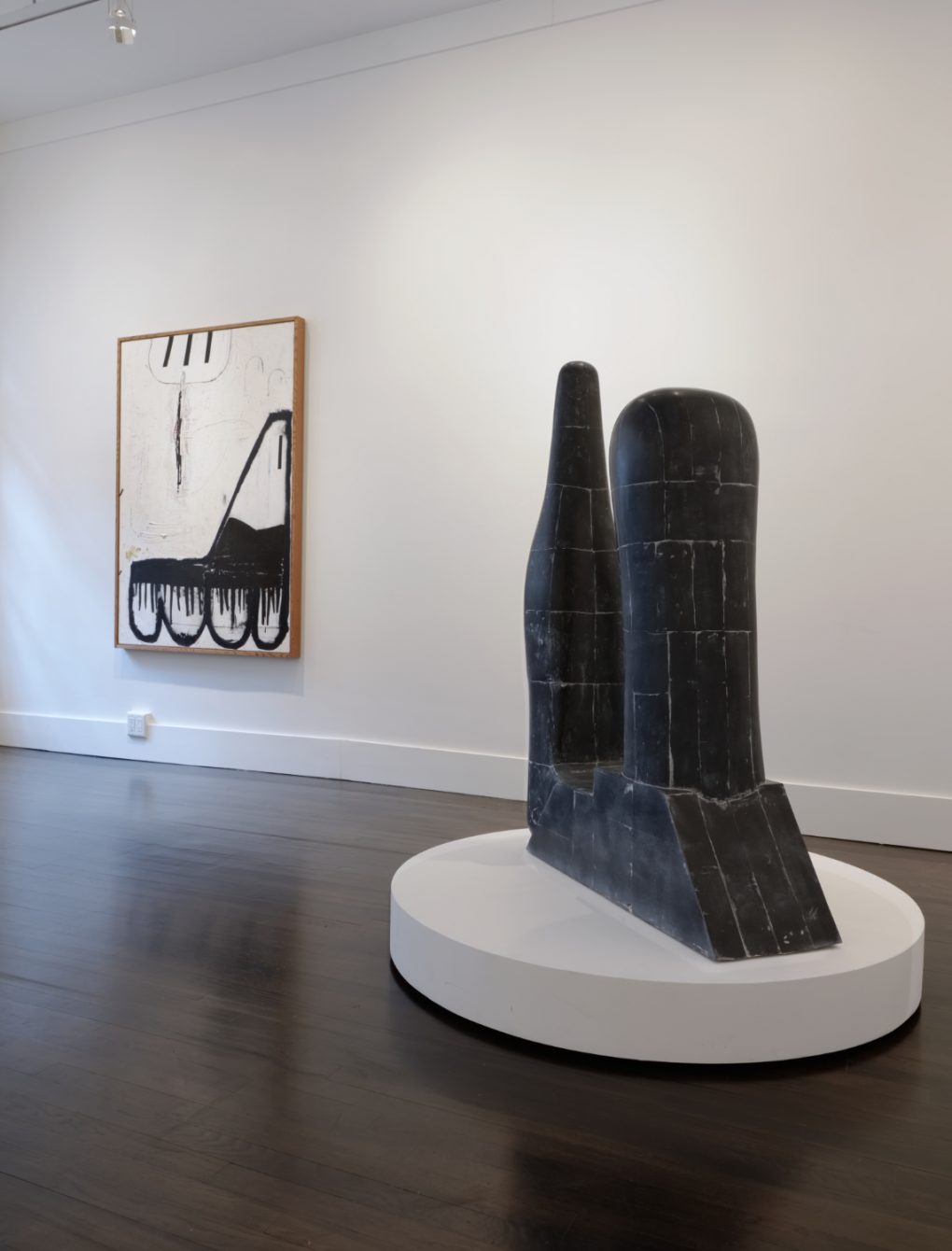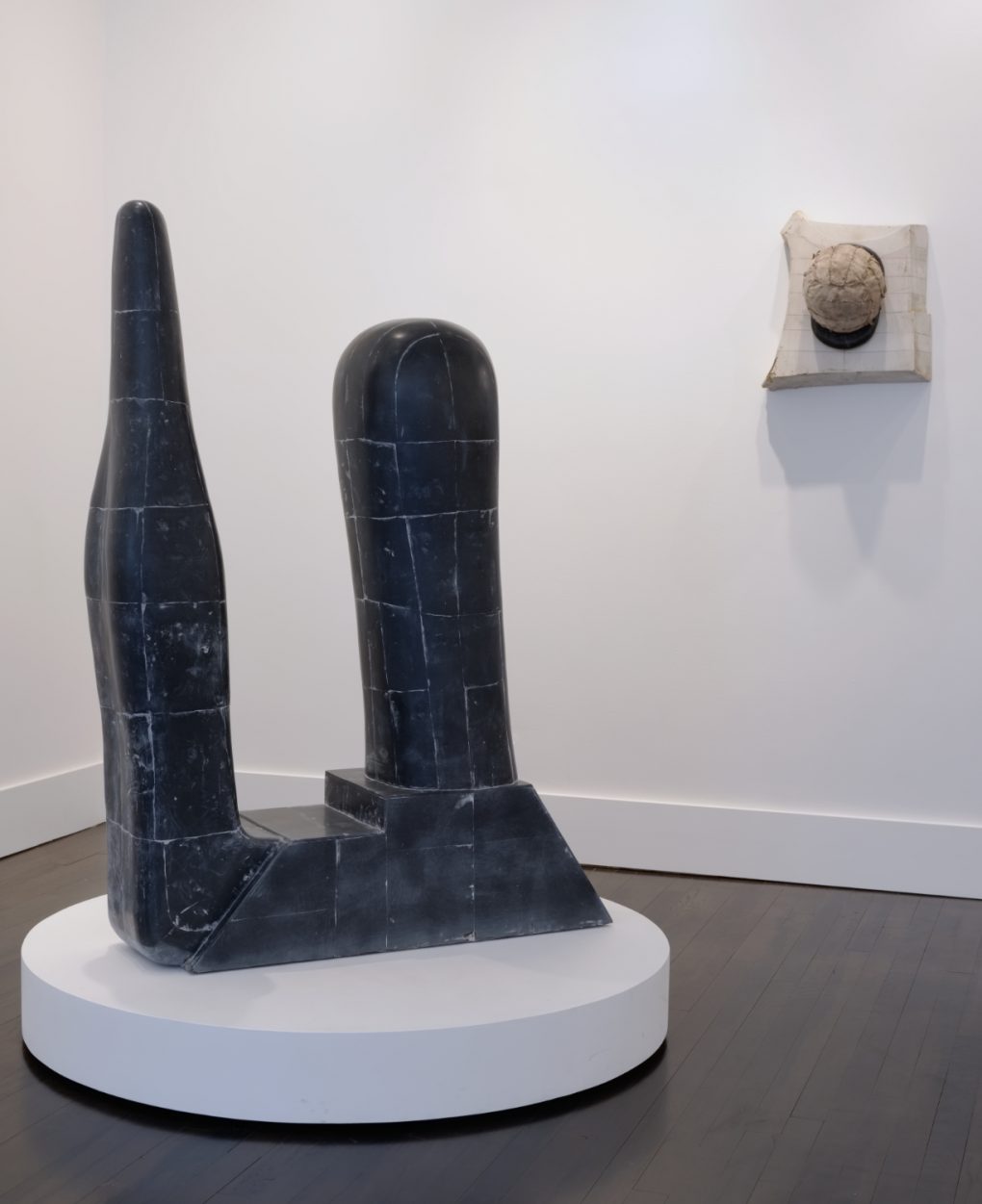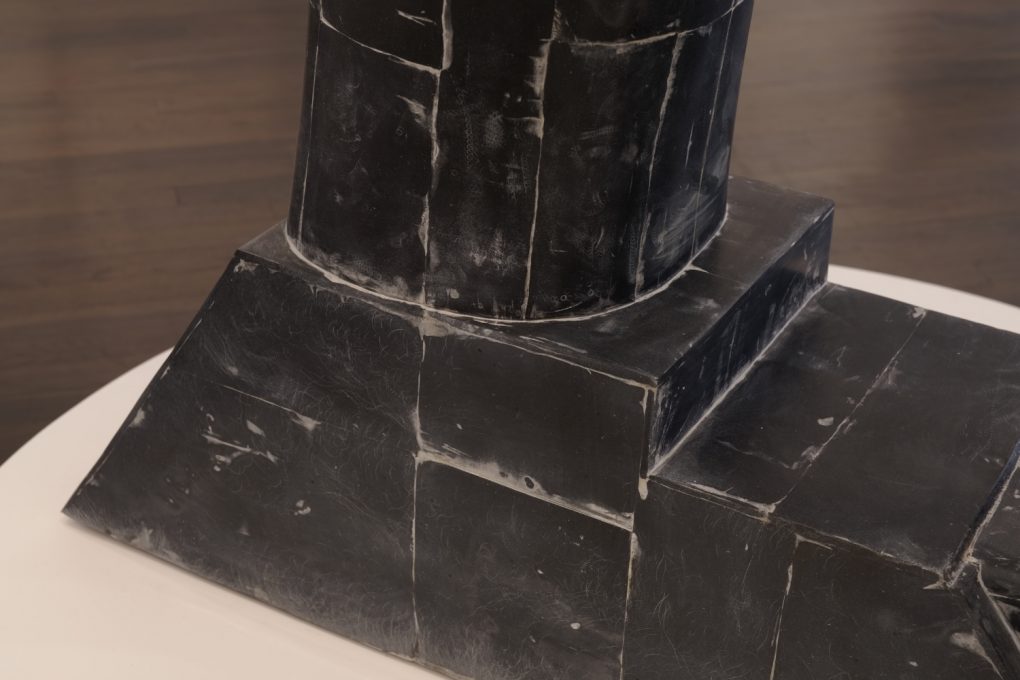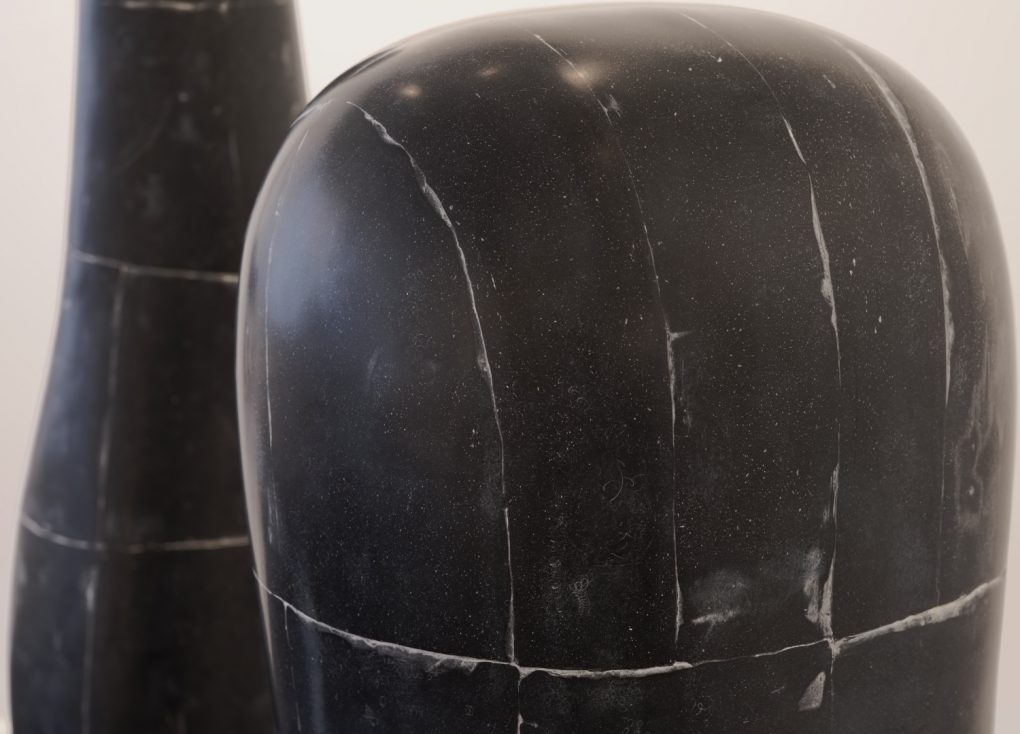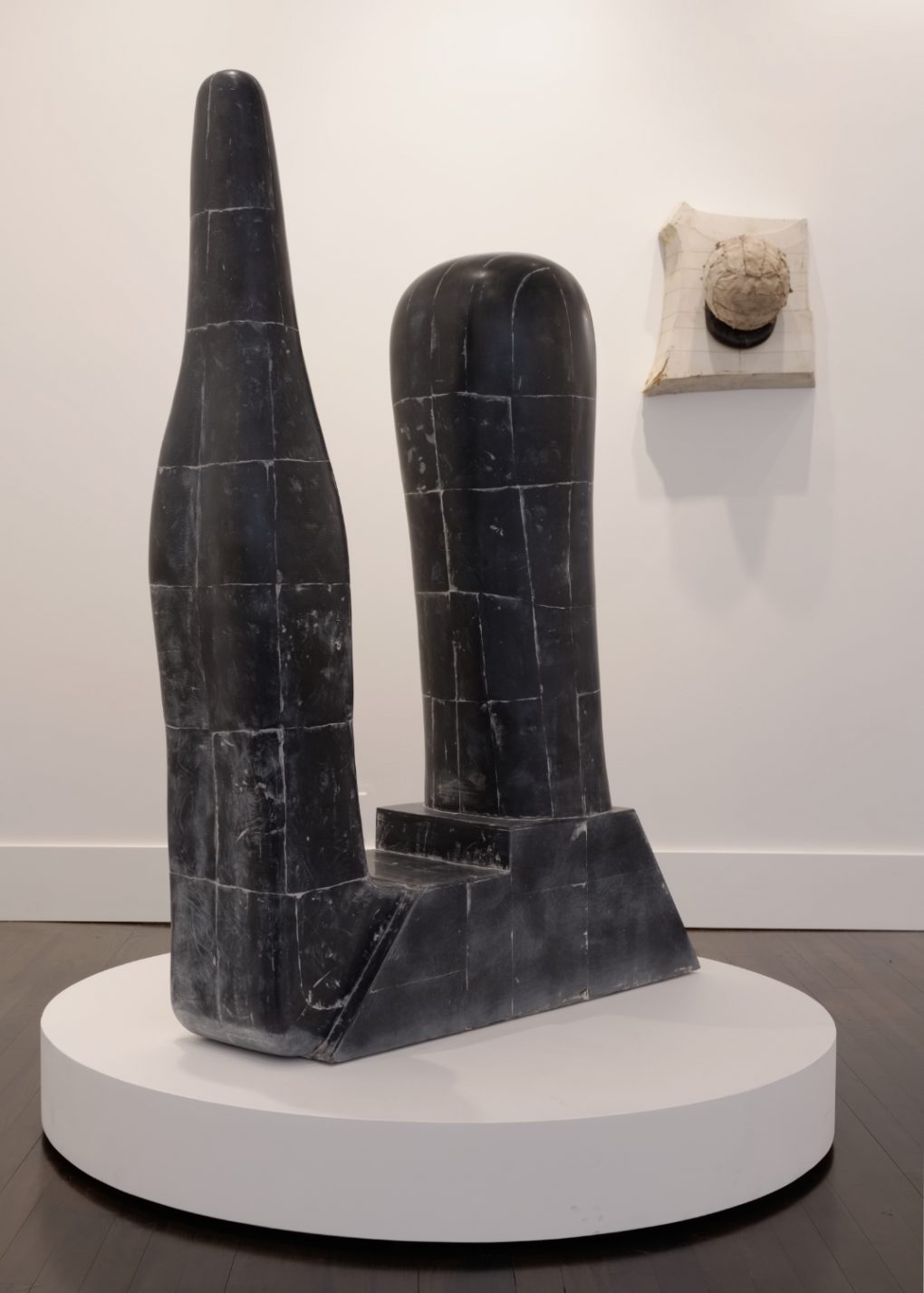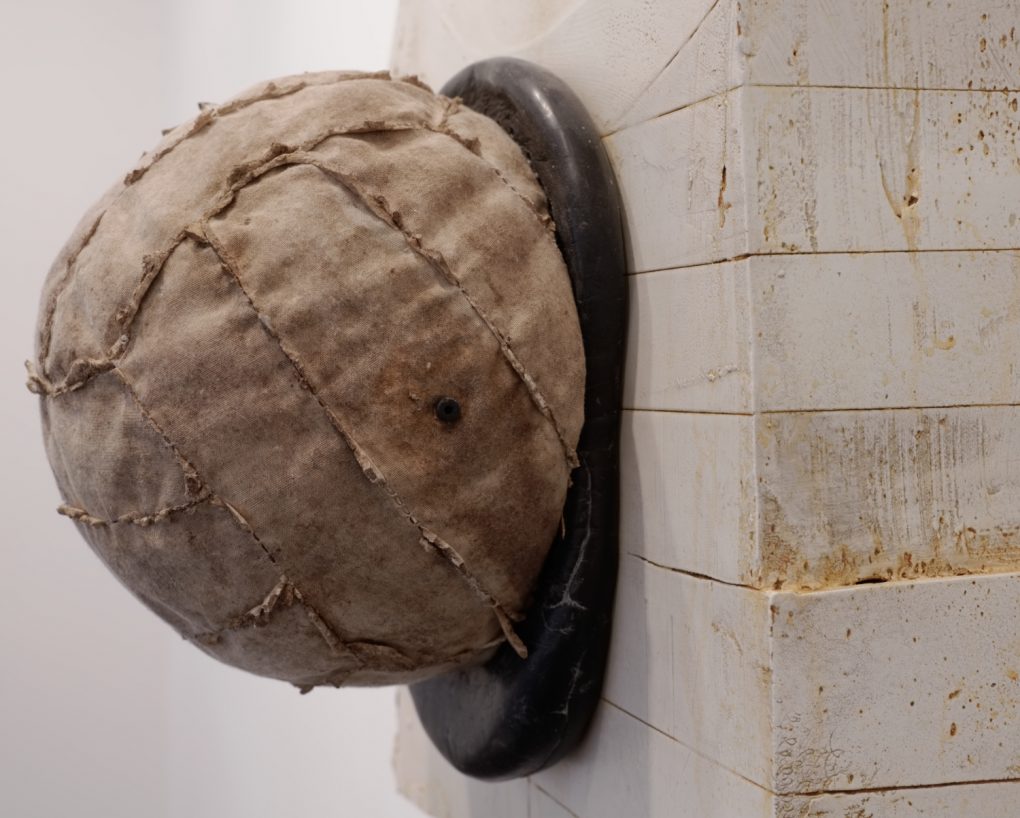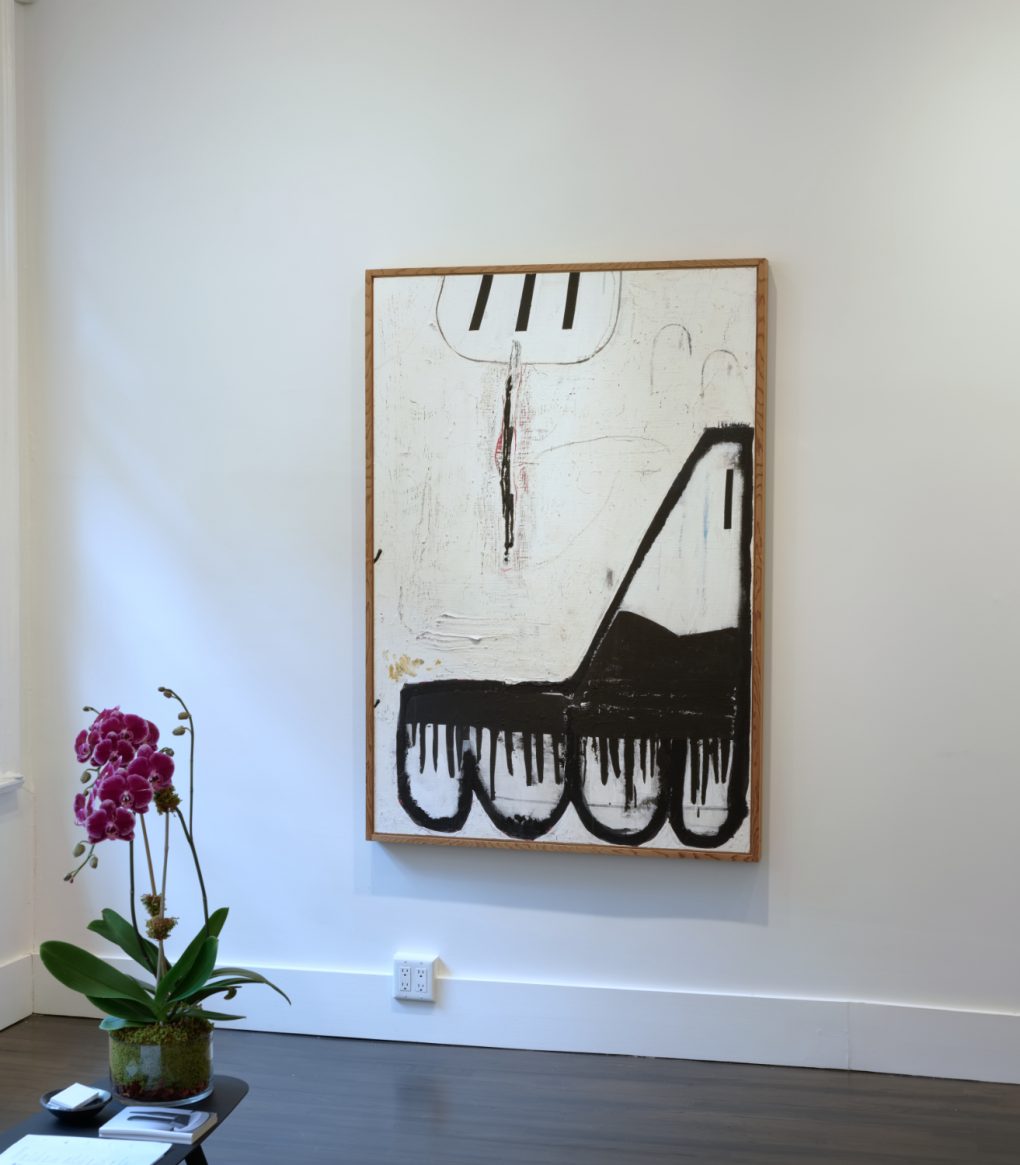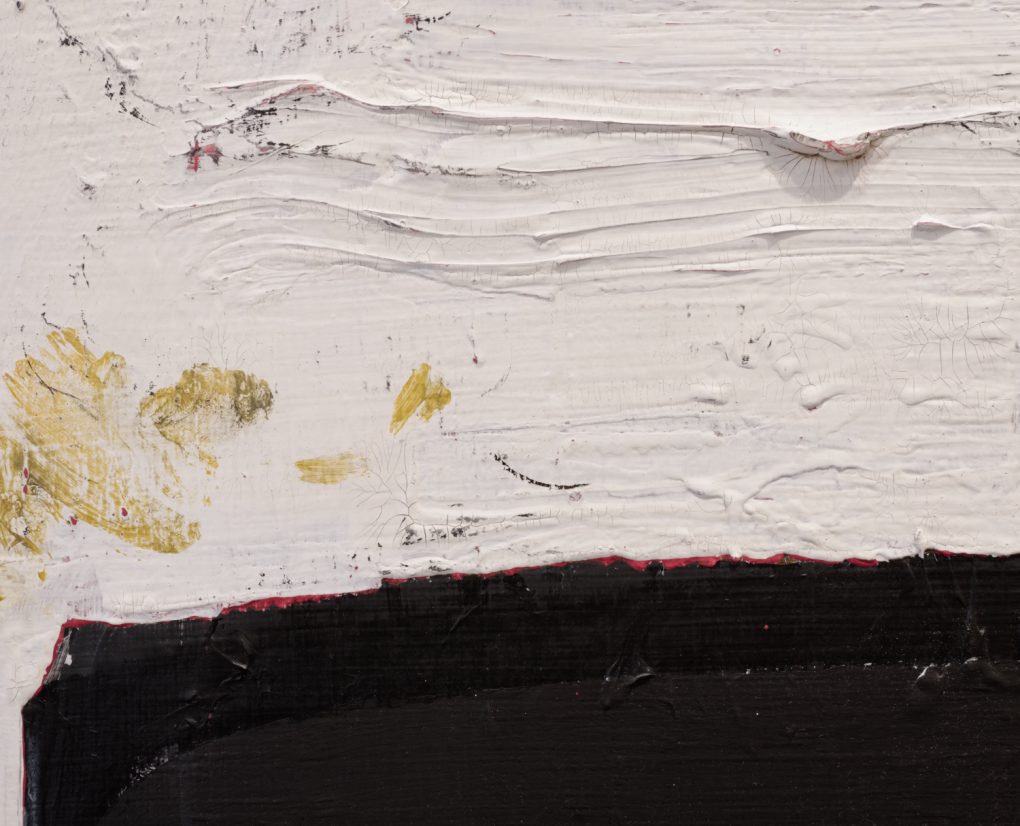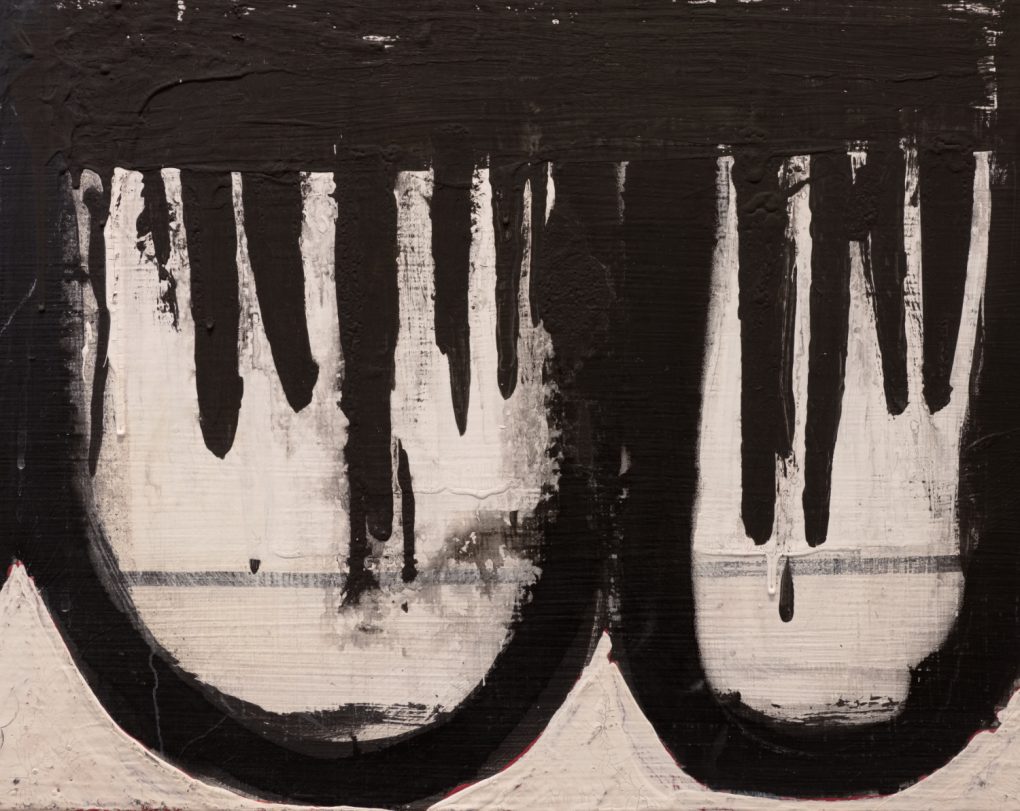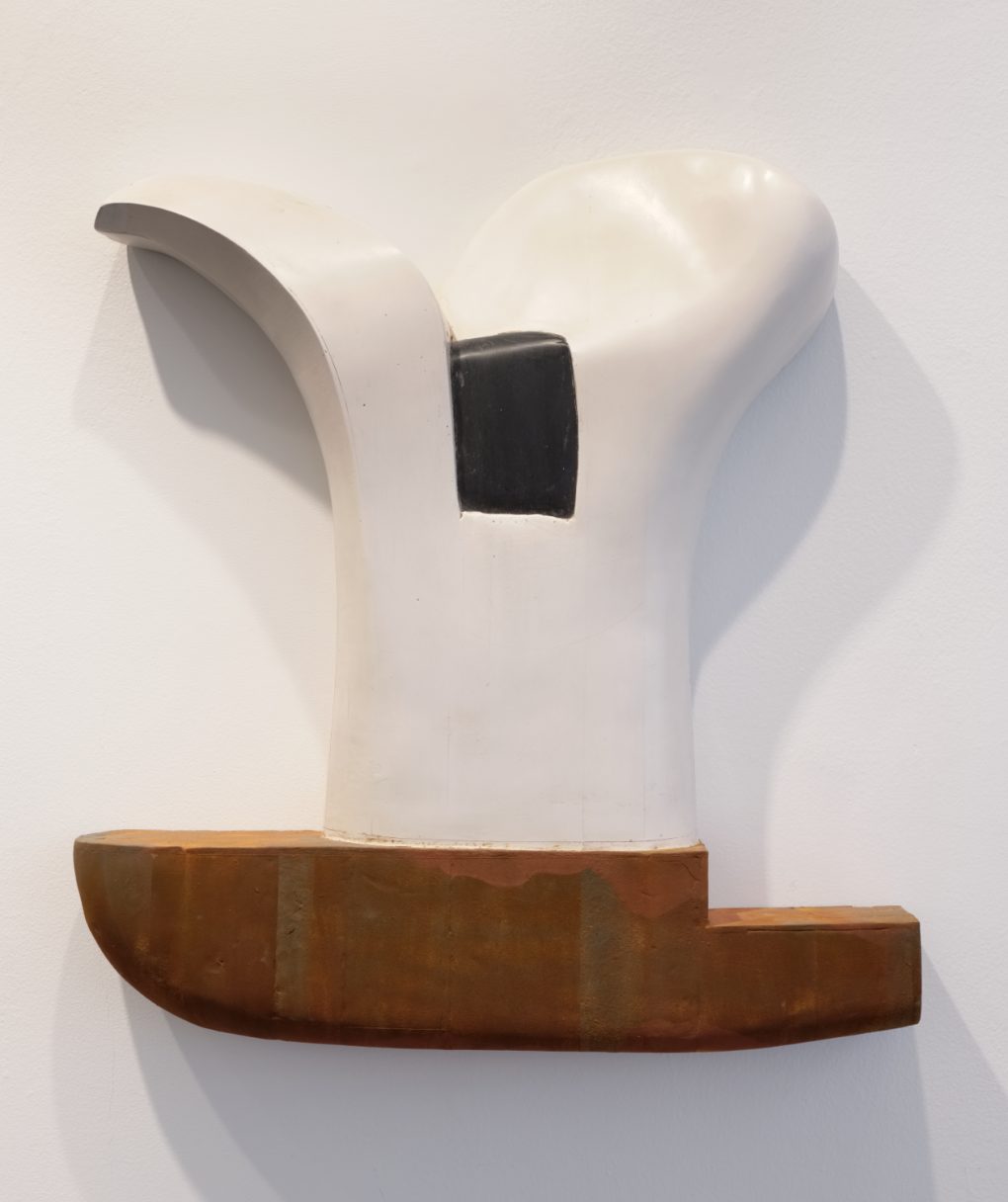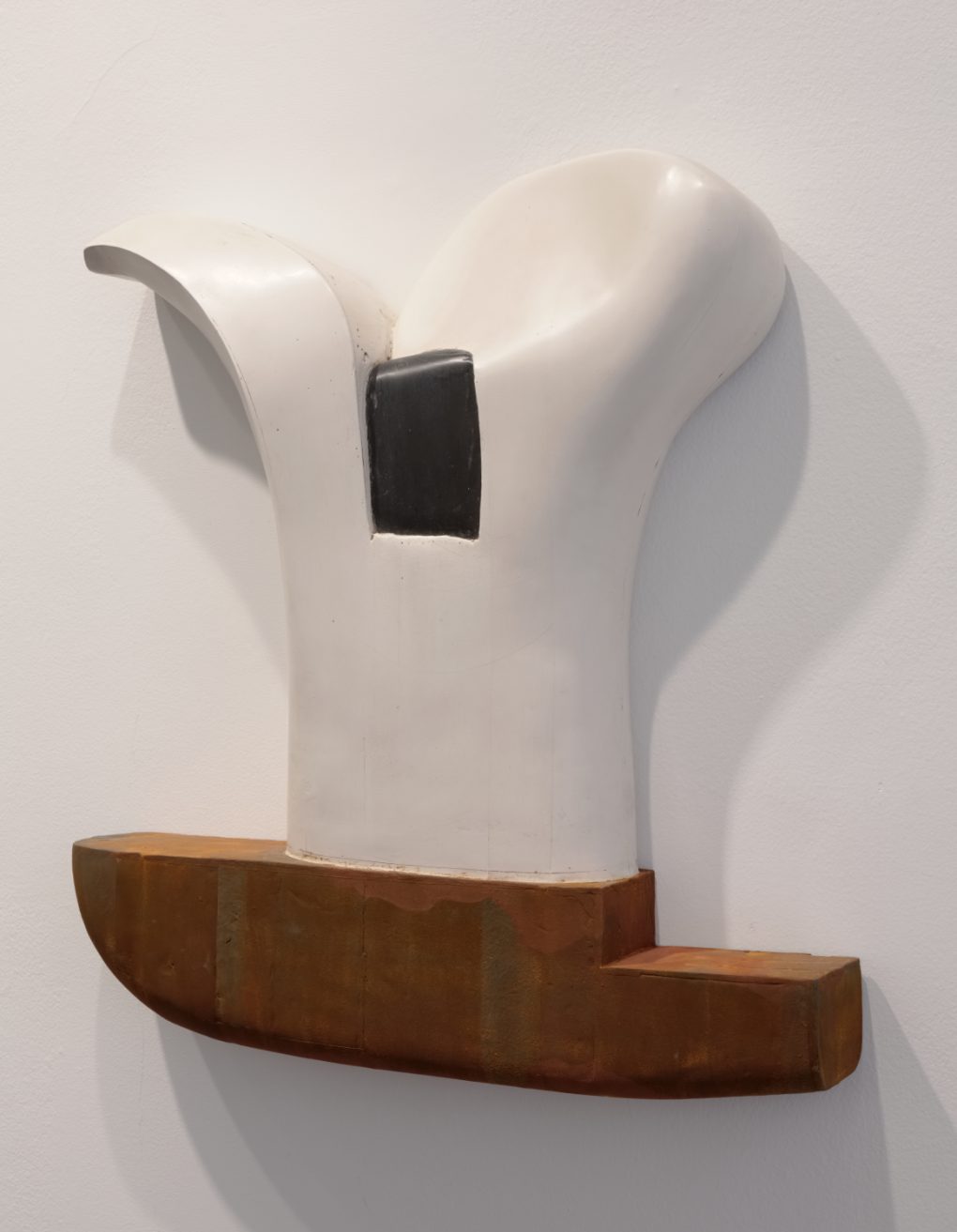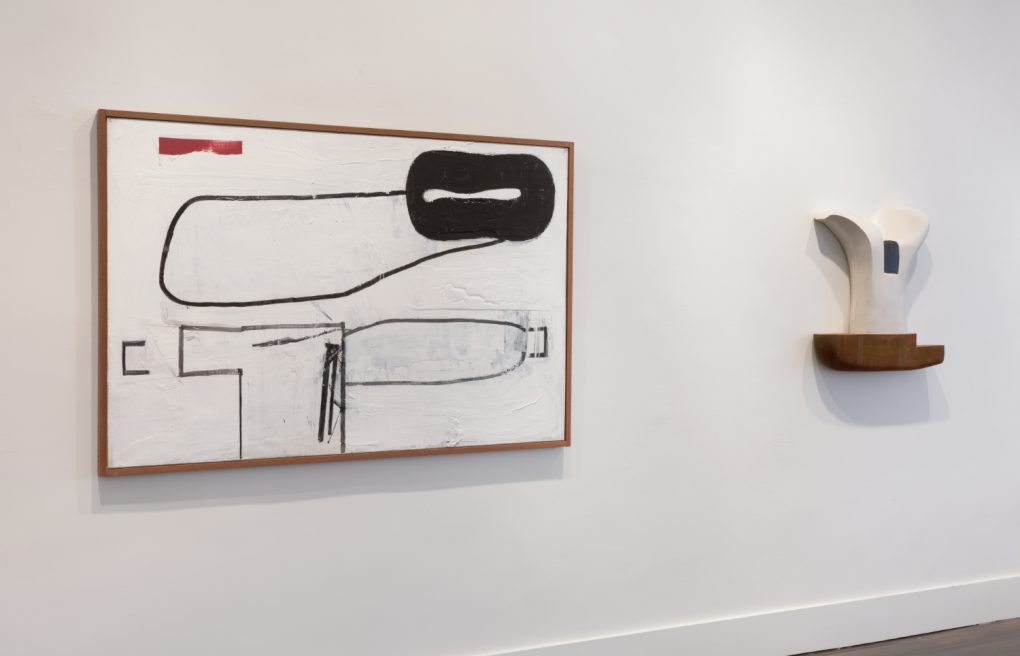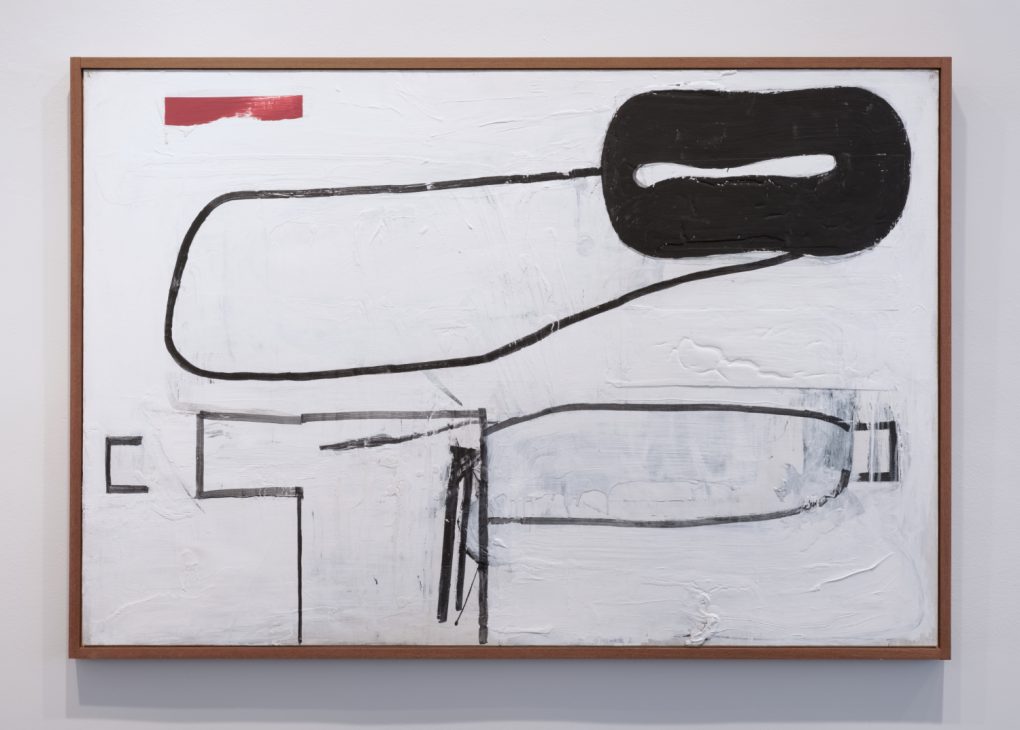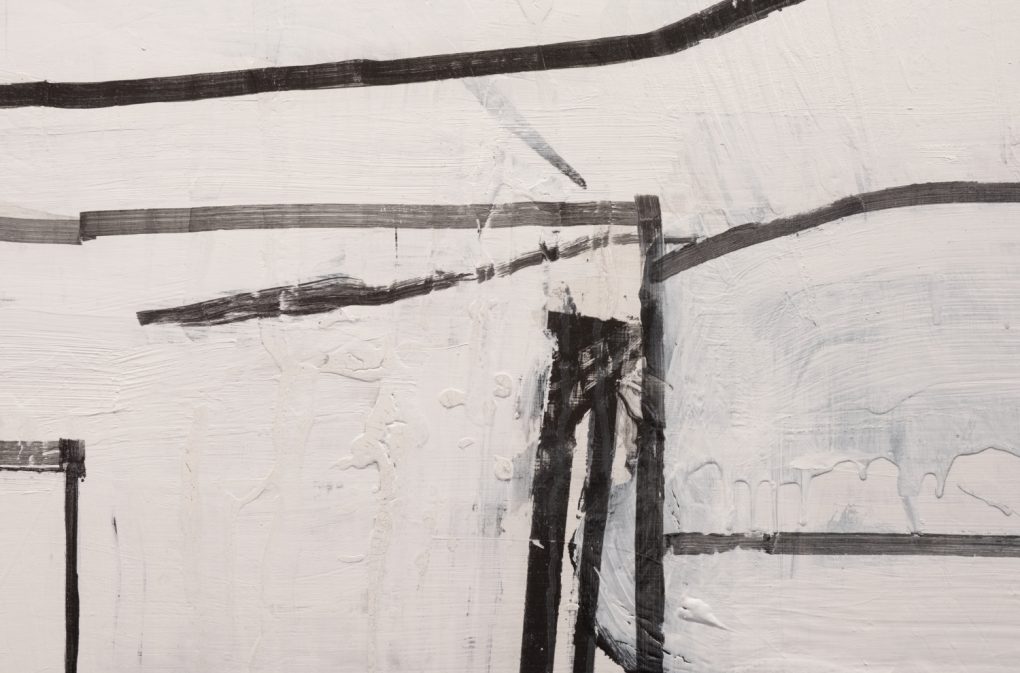-
Images from Bookstein Projects show
Here are some images from the Bookstein Projects show. The show is up till February 15, 2020.
Bookstein Projects60 East 66th Street, 3rd Floor, New York, NY 10065Tel (212) 750-0949info@booksteinprojects.com................. -
Pechakucha Talk at Parrish
In News onFollowing is a text from an event Pechakucha Night Hamptons Vol. 1 at Parrish Art Museum on Thursday, September 20, 2012.
Thank you for inviting me today. I would like to talk about making sculptures. The first step is to come up with the basic idea for it. This is a tricky process because I am interested in an experience without words, stories or symbols. What I am interested in is to make you feel like you belong to the vast universe that is within the tiny cells we are made of reaching out to the edge of the space out there. It can be a scary feeling. You are all alone just floating in the unknown vastness. You might be stuck with something you don’t understand. Or you might feel like you are nothing. You might be lonely and afraid. But I believe good art can let you feel the vastness and the mystery without the fear. It welcomes you with open arms. And remind you that you belong to that reality. It can be a moment when you look at a painting you love. Or it can last for a whole song when you listen to a great song. Or it can last for a whole chapter of a book. What it does is that it can become a bridge between that part of you and you buried in our everyday life. It gives us the courage to go on and it gives us the courage to embrace the unknown with curiosity and excitement.
Making process is a weird thing. You open yourself in certain ways at the same time you let go of other things. It’s not like solving a math problem where you add a fixed number to a fixed number for instance. Most of the time you can’t even see all the numbers you are adding. And the missing numbers can only be seen with your heart and soul. For an average man in mid 40s, jaded, cynical and disillusioned, it is not easy. As soon as I think I caught something, it’s gone. It’s like building something with my eyes closed. The things I can count on the most in this complicated process are persistence and time. Good work requires breaking rules that I have cultivated over the years. It requires additional trials and errors that allow me to see the new possibilities. I have to be patient in sticking to the goal.
The process is very slow and it’s done with my tiny brain with yet smaller art window looking out where the work sits. I go around the work so many times trying to look through the window mostly failing to see what’s out there. But eventually I succeed in mapping the area. I slowly build the work. I try to feel my way through every inch of the surface. In fact, it’s much less than an inch. Sometimes a tiny dot might make a big difference, like a tiny sparkle in somebody’s eye that can make him come alive. But it gets complicated when the work doesn’t even have an eye or a face. It’s a very time consuming process. But when the work is done. It’s very obvious. I am at a special place only with my work and myself. Nothing else matters and I am completely at peace, or completely excited.
So how do I go about it? My approach is to start from drawings. That’s my map to guide me to where I will be struggling. The lines, subtle shades of tones, shapes, these things can imply the vast process that I will be going through. I keep my sketchbook with me all the time. I try to brain storm on papers and come up with recurring shapes that literally ask me to work on as it starts to appear as a three dimensional piece in my imagination. Or sometime it just pops right on the page and I’m certain that I have to work on it.
I started out as a painter so building structures can be rather crude with lots of trials and errors. I mostly use materials you can find at a hardware store: Wood, insulation foam, burlap, plaster, roofing tar, spray paint, and so on. And using newer, more exotic materials has been an interesting challenge today.
The surface treatment brings up the characters of the piece, It defines the shape, it gives a static object movements, rhythm, surprises, and visual narratives. Or it can even tell you an imaginary history of a catastrophic event, reconciliation, or just endless calmness and richness of unbroken cycle of nature. I have fun going along with the flow. I take chances. I try to see things I didn’t see before. The result, when it works, always surprises me with a fresh presence of its own.
Following images were shown during the talk–20 images, each shown for 20 seconds.
Pechakucha Night Hamptons Vol. 1 Thursday, September 20, 2012 – 6:00pm to 9:00pm
-
January Biannual 03 Interview
In News onLast year I was interviewed by January Biannual: A beautiful crowd-funded publication with no advertisements. I enjoyed answering the questions very much.
Here is how they describe themselves:
“JANUARYbiannual is a publication with small dreams. We are inspired to touch just a few, but in a way that is lasting and profound.
JANUARYbiannual is fascinated by substance, by depth, by fortitude, and by integrity.
It is our humble ambition to slow things down, for just a little while”.
I think that’s wonderful. Please check out the publication.
Here is a link to the interview (a pdf file)
-
Liganova interview
In News onLast year I was interviewed by a German company Liganova which is starting an art collection. They have published a couple of publications based on the interview: One for their newsletter and one for their newly launched Ligastudios.
Here is the original interview unedited with extra pictures.

Photo by Richard FoulserHow and when did you enter the art world?
– tell us about your life in Japan
I always liked making things when I was a kid. But I didn’t grow up in a family where that sort of stuff can be your job. My dad worked in Tokyo and commuted from our suberban house 1 1/2 hours away. I grew up to be a typical teenager: angry, feeling alienated for mostly immature reasons. Then my family had to move to the US for my dad’s job (I was 18 then). I got to be a minority in the US (we moved to a little town Wheeling, West Virginia) and I had to struggle to communicate . It was traumatic but also pretty funny if I look back now… I think every teenager should go though that. I think that set me up for pursuing art. I learned some English and I decided to go to a local community college where I met a teacher who showed me what you can do with art. He showed me that putting together lines, colors and etc. on a piece of paper can be like making music or writing stories. I was very naive, ha ha. And he was very good. I was good with my hands but I never knew how to put things together to make it really speak; I never knew that you could put words in between the lines and make it all deep and profound visually, you know? And I totally got hooked. After that I was basically stuck in studio drawing, painting and etc…
Why New York? What did you think New York would give you that Japan didn’t at that time?
I moved around quite a bit before I came to the NY area. In the US, there is this great thing called “artist residency”. You tell them that you are an artist and if they like what you do, they’d let you stay and give you a studio. Some places even pay you to be there. I even met my wife at one of those places. So, after I got my MFA, I was basically half homeless moving around those places. Can’t imagine how I did it now but I didn’t really care much except for what was going on in my studio (my wife would tell you that I still don’t ha ha). And after a while, I wanted to really show my work. And naturally NYC was the place to go. Back then (It was around 1997 or so) and probably now too, the numbers of venues you can show and artists population in NYC area were just staggering compared to other places. If you go to one of those residencies, you’d be amazed to see how many of the artists you meet would be from NYC. But today I wouldn’t care too much about where I work. The work comes first definitely.
How did the NY art scene meet a young Hiroyuki?
– were you already having pieces as you came to NYC (you were 18, right?)
Coming to NYC, well, actually it wasn’t NYC. After a couple of weeks looking for a cheap place which doesn’t exist in NYC, I settled with a good sized space across the river in NJ. It was one of the sweat shop buildings in a big Cuban community. So it wasn’t really NJ either; it was Cuba. It can be seedy but it was mostly mellow and warm. I heard more Spanish than English. I remember the first taste of chicaron (what a concept, deep frying a chunky pork belly) and good cuban coffee. Have you had Cuban sandwich? The crispy bread outside and exquisite mixture of melting cheese, rich fat pork and the great accent with the pickles? Anyway, as soon as I got there I sent out slides with nice cover letters to galleries that I found to be good. I think I sent a couple of dozen. And they all came right back saying basically get lost, ha ha ha. The only place that was willing to show my work then was OK Harris Works of Art. I heard Ivan Karp would look at your work. So I went. I showed him slides and he said he would do a show with the first look. I wasn’t sure what he meant so I tried to show him the painting I brought, too. Then his son, Ethan, said “No, you don’t have to, he’s giving you a show . That’s good. He doesn’t even have to see it.” I still remember that well. They did my first solo show in NYC.

One of the older pieces (#7, 1996, 16 x 16 x 4.75 inches, burlap, enamel, plaster, tar, wax and wood)Do you have a favourite show-space in NYC where you often go?
Well, I’d love to say this museum or that gallery but every time I have extra time in the city, I just end up walking around watching people, looking at interesting ads, graffitis or buildings… NYC is just amazing visually in general.
When did you have your first exhibition and knew you are really getting into the spotlight?
Hmm… I don’t think I’ve felt that before… It’s really about myself and the work when it comes to shows. I am an audience too and there is nothing else better than to feel the impact of everything in the show working together to move you, and to see it happening as you place the work and do the lighting. I totally feel the spot light then, but it’s on the work, not on me.
Have you ever played with the idea of opening your very own gallery? How do you choose where to show your work?
I guess these questions are sort of like the front and the back of a same coin… I would want to open a place where I would want to show myself too but then I’d realize how tough it is to do it well. You have to have a space that maximizes the experience. You would want to treat the artists well and be capable in doing the right things. And what do you do with the expense that can be enormous? It’s easy to see that finding good places to show can be hard… So when I try to think about where to show I really can’t plan and wish for exactly what I want. It’s more like depending on my gut feeling and going with the venues that make me feel like I’m doing good to people who like the work. That often works for me. And I also don’t underestimate the people who try hard to make the show great. There often are happy surprises.

An exhibition shot at Roger Williams University GalleryWhat does your art reflect the most? (you, your vision of the world, the world itself)
I think everything counts really. But one thing that’s really sure is that I get motivated to go to the studio by what’s happening in my studio, and working there gives me more ideas and directions. So it’s like exploring what’s possible visually with what I do in my studio. As I learn, I get these layers of ways to deal with visual narratives and new vocabularies also develop, and as I keep going, I come out with more ways to see things differently.
From what I know, you have started with drawing – how and why did you do this shift to sculpture?
I think I wanted the experience to be more articulate and immediate. I do still like the suggestive, gestural quality of drawings I used to do but it’s also so gratifying, so mysterious and so strong to grasp those qualities as much as I can and tell it in 3D with every detail. How it actually happened was that, first, I picked up on the object like quality of drawings. It’s like seeing them as they are with their distinct presence with every imperfection as theirs, instead of seeing them as a picture of something that is supposed to be dipicted. I think a big part of modern/contemporary art has to do with this realization and appreciation of taking visual experiences as they are. In a way it’s sort of primitive compared to, say, like music. That led to paintings with textures and irregular edges. Then, they started to grow off the wall. At some point they were more like sculptures.

Photo by Evan HarrisDo you listen to music when you are working or perfer it to be in quiet?
Sometimes I do. I think the music can shift my mood to get things going. Or the rhythm can be nice to keep the physical work going. But there are moments I have to keep it totally quiet. My guess is that certain processes need certain brian activity and sometimes music interferes with that… But I do love music.
If you happen to put on tracks while you are working, which artists, bands, etc. do you listen to?
Oh, that could be anything really. Lately, I’ve been really liking this band from the 70s called Popol Vuh. It sounds sort of familiar but it also sounds totally out of this world. The mellow speed and the atmosphere seem to work for the pieces I’m working on. I grew up listening to lots of aggressive band music and I still have a soft spot for it. For example, someone posted at Facebook the other day this band called Up Front, and I’ve been enjoying listening: it sounds sort of like Minorthreat, a lot of energy and there is a pleasant innocence about it. I’ve been listening to lots of classical music for the past years also. The level of development in non-descriptive expression in the field is just amazing. It’s such an inspiration and encouragement for working in the visual field. Ah, I can just keep going about music…
I am so sorry, I know artists hate this question, but I simply HAVE TO ask this:
where do you take your inspiration from – nature, art, architecture?
I think anything can be inspiration if you are talking about how I get motivated to work: Anything that got put together well to have a cohesive whole that functions more than its parts. Like, you wake up and go outside and suddenly feel like the way the sun hits your face just explains everything about why you still want to be alive. You feel so fulfilled and happy. It’s just the same old sun and same old self in the morning but somehow the combination means something to you… And that can be a good inspiration. But like I said, it’s mostly the developments in my studio that inspire me to go further.
Do you take decisions on the materials you will work with before you start with a piece or doese the piece itself tell you what materials to use?
My work grew out of paintings so the idea of materials dictating the pieces is sort of new. I always thought it’s natural to paint every bit of surface to make sure it goes with the form. So far I’ve been mostly using plaster shells on foam/wood structures to paint on for all practical reasons (cost, ease of use and so on…). For a long time, I didn’t understand sculptors talking about materials with almost religious intensity. I mean, why would you expect a surface which is hardly uniform or predictable to do what it is supposed to do? Now I understand the seductiveness of the materials and the convenience and the thrill of counting on happy surprises and so on but I still like the flexibility and the super real presence which a meticulous paint job can present. So if you see different materials in my work, they are most likely painted or stained that way.

A stained plaster piece looking unlike plaster. #68, 2007-09, 41 x 23 x 20 1/2 inches, enamel, oil, plster, tar and waxDo you as an artist have a favourite artist?
please give some examples of artists you like from different epoches, different styles, etc.
Hmm… That’s tough… I’ve got my own interest in process and direction and I look at my work with that all the time so my capability of appreciation is somewhat skewed I’m afraid. Also, when I started out, I meticulously tried to avoid doing what other people were doing. I was sort of afraid of getting influences I guess. Also, I have a rather more standoffish relationship with visual art than, say, with music. I would be often totally taken by music, almost getting drowned with the pleasure. But when I look at visual stuffs, I’m often more objective in general. More interested in seeing alternate ways and investigating than consuming it for pleasure perhaps… I think it’s only in the past a few years that I’m becoming more open to seeing and enjoying as I feel more grip on my own work. But I’ve always enjoyed Martin Puryear’s work. I like the forms he works with. The way the work relates to you in the space is also nice: And the subtle playfulness he puts. I also like Anish Kapoor’s work. I saw his Bean piece in Chicago a few years ago, and it was so encouraging and happy to see people totally being fascinated with it. I mean, I saw people literally dancing around it and having fun being with it. And I also enjoy lots of figurative works. That’s what I started out with myself (I used to love doing figure drawing). I think Basquiat is just a marvelous painter. The sense of color, the way he composes in such striking ways, the confidence in lines with such fragile subtlety and doing all that with such spontanaity is just amazing. I see many others that I enjoy online, people like Kris Kuksi, Ron van der Ende, Eddie Martinez, Christina Bothwell, Blu, Jen Stark, Karim Hamid, just off my head randomly…, and many more I guess… I just had fun seeing the Nick Cave show in NYC. When I was in school, I looked at artists like Jesper Johns, Rauschenberg, Kiki Smith, Eva Hesse, Tapies, Louis Bourgeois, and so on. But they all came in through other students’ works that sort of emulated them. It’s interesting to learn that way. You see what the essential qualities are for the students and you experience the first hand account of dealing with the materials…
You don’t give titels to your work – why?
I’m really interested in what I get by combining visible things, and I don’t want to make it about stories, references, symbols and such, at least not on the conscious level. I mean, I want the visual language to hit your guts hard, not the theories, anecdotes, or background stories sort of making you feel something in wishy washy ways. And also I don’t want to limit the work inside of my narrow cultural and social constraints. So I figured the easiest thing I can do to put the focus on the substance is not to work with those things. If they creep in, I just try to stay away from them. It’s very inefficient but it’s very effective when it works. I think I can get to the bottom of what we are that way. So not giving them descriptive names is a way to make sure that it doesn’t imply things aside from what the forms are doing. But it’s probably something to do with my laziness too. I know that you could come up with titles that can enhance what I’m trying to do… So oh well…

#59 (detail), 2005-08, 20 diameter x 36 inches, enamel, oil, plaster, tar and wax

#59, 2005-08, 20 diameter x 36 inches, enamel, oil, plaster, tar and waxWhere do you take your friends to when they are coming to visit you in New York?
I don’t know… I’ll ask my Facebook friends, ha ha ha. I don’t get to eat nice exotic stuffs out in Eastern Long Island where I live, so I might try to convince them to go for nice Vietnamese, Thai, Korean, Indian or Chinese… If you are talking about food that is. I used to like walking around in Chinatown looking at fish, veggies thinking about cooking. Nice sushi would be good too. If there are good shows, gallery hopping in Chelsea is also nice. But like I said, what I like to do there is just taking a walk looking at things, people, buildings and etc. I always see interesting things in NYC…
How do you relax? What do you do in your free time?
I go to my studio ha ha ha. I can always work on something… I have an electric guitar set up and I have fun with that sometimes. It’s a nice thing to bounce on when I feel like I am stuck with my work. Or when I just have the urge. I think I have some sort of addiction to loud, distorted guitar sound… I also keep sketch books everywhere and I like to draw shapes and things when I have time. Also, my wife and I watch TV shows sometimes. We’ve been enjoying “Breaking Bad” lately. What a fabulous show.
What do you get to read MAGAZINES or BOOKS more often? Which are your favourite magazines?
I haven’t read any magazines for a long while… At least not the actual paper versions. I really depend on internet for news and articles now. I used to read lots of books too and I aways had a big pile next to my bed, but not much reading lately. It’s just that the time is limited since we got two small kids. But I’ve read a couple of Malcom Gladwell’s books recently and I really liked them.
Which 2-3 names in the fashion industry from former era do you see as iconic?
Hmm…you got me. What can I say. I’m the kind of guy who shows up at my own opening in a Dickies jump suit making my wife’s eyes roll with dismay…

Photo by Evan HarrisWho are the most influential names in art today?
Not the individuals, but I think TV shows and movies totally rule on that. And in terms of the impact and the quality too perhaps. I don’t get to watch many but some shows I’ve watched are just amazing: Like Breaking Bad, Wire, Sopranos, or some episodes from Battlestar Galactica, for examples. You get great writing, camera work, acting, set design, music, sound effects, visual effects and on and on. I just think the total experience from them is the culmination of art history on the planet. Have you watched District 9? Just amazing.
Which of them has left an imprint on your style (if at all)?
Well, things get in me and I must express something in my work, but like I said, I don’t make my work about anything specific so that’s something I can’t really answer…
What are you working on right now?
Right now I have 4 pieces in progress. They seem to be freer into space and they speak a bit more as shapes. I’ll see how the surface gets treated. I started out as a painter so working with the surface is a very special and fun process for me. I’ve been also trying a few resin materials instead of plaster since the pieces are a bit bigger and more complex.

Snap shot of the studio 1/21/12 (iphone photo with Autostitch) -
Lori Bookstein Fine Art Opening Photos
In News onHere are some images from the opening night…
Hiroyuki Hamada: Two Sculptures
IN GALLERY II
September 15 – October 15, 2011
Lori Bookstein Fine Art
138 TENTH AVENUE NEW YORK NY 10011
Tel 212-750-0949
-
The Last Weekend For The Art Sites Show
In News onIt’s been a great few weeks having a show at Art Sites. The show turned out to be super
featuring the latest works as well as the oldest ones. Last week, we have also added nine
of my oldest drawings predating the plaster sculptures. You can see them in the office area.And, we have one more weekend to go! The show will be closing on Sunday the 10th. Here
are a few images from the show. More photos with large view options will be added to the
main part of the site in a few weeks.Here is how to get to Art Sites: Direction to Art Sites
Art Sites651 W. Main St.Riverhead, NY 11901631-591-2401hours: th-sun 12-5Please call for additional hours -
Making of #63
In News onMaking process is never straight forward. Any way that works is the right way
for me. With #63, it wasn’t an exception. I’ve gone through lots of trials and
errors and finding and getting lost. And it lasted about 4 years.The first step is usually getting the core idea of the piece. It’s an impression of
the work, or a glimpse of what it can be; it’s the backbone of the piece I can hang
onto during the making process. It might be a quick find with a strong conviction,
or I might get it through numerous sessions of brain storming in my sketchbook.
Either way, it usually ends up as a very rough sketch on a piece of paper.So this is the seed of the piece (above). It’s a crude memo to remember what ticked
me about the piece. Depending on the piece, it can be refined more before I work on
the actual shape. With #63, I did make a few more, just to have rough idea of working
with actual materials.#63 was made in five sections, partly because of the practicality (to make it manageable
in my studio, because of the weight issue basically), and partly, I wanted to incorporate
the dividing lines as part of the piece. Each section’s core was made with foam and wood.Here is how the core looked at its rough stage (below).
I usually paint the core white to see the shape without the colors of the foam and
wood. The form just has to click into the right place before I go on to the next phase.Next, the five sections were covered with plaster shells. In order to extend some
dividing lines to the individual sections, plaster was applied in sections.After going through numerous adjustments, the basic form is decided. Having
the actual shape in front of me helps me to see what has to happen in grasping
the essence of the piece. For instance, compared to the initial plan, I gave more
volume to the top part (upper right in the picture below) and the opposite end also
received a wider top than the lower bottom.Working with surface is a big part of my process. I like a natural, realistic
appearance that immediately draws me in. Some sculptors might achieve this by
meticulous observations of the materials they use. Or some might chose to focus
on the forms by minimizing the surface variations. With my painting background,
I seem to naturally lean toward making up the whole surface, inch by inch basically.For this piece, I put down 8 to 10 layers of flat white enamel to start. The plaster
surface was sealed prior to being painted.The clean surface is covered with a mixture of wax, resin and tar. The thick mixture
is spread slowly with a heat gun. This layer allows me to see what the surface is
doing. The imperfections left in the plastering stage and in the painting stage
become active elements for the work.#63 brought me into a new territory on a few levels. It’s a first freestanding piece
with a rather complex shape (compared to the other ones I worked on!). I wanted
to fully utilize various views with their own appeals. I wanted to give the front view
a certain visual drama, and if you walk around to the side, you would be greeted by
a different sensation and so on. Also, I wanted to pull the piece together with a
freestyle paint job instead of relying too much on textures or repeating patterns.
Working in this fashion on a 3D surface was a new challenge for me. The surface
would be rough and raw. Simple shapes, lines, subtle tone shifts, contrasts and
etc. can totally energize, and give significance to a blank field. An example of this
approach would be #8 which I finished in 1996:The sensation of getting to that point is rather ecstatic. And with #63, I wanted to
activate the whole 3D shape: Give it a sense of all charged up object with its own
character and history. It was a piece to throw my euphoric desperation of being in
my 40s at (you can read a bit about it here), and dig away and explore.The decisions in the process are made intuitively. By intuitive, I don’t mean to be
random or aimlessly shooting in the dark. I believe our brains can make certain
tasks automatic with accumulated experiences and knowledge. Sometimes in
our daily lives we feel certain things to be right or wrong just by glancing at them.
And we try to figure out what logic went into that feeling. The intuitive step in
my process is a lot like that. It’s not a particular reasoning skill or a theory that
decides the next step but it’s the flash of impulse that strikes when your mind is
empty yet totally alert to every possible step. I value this method since it simply
works in reaching the convincing, realistic presence of the piece, and also it’s a
totally personal and honest step that comes right out of who you are. I also
suspect that the intuitive process would not only encompass our learned skills
and knowledge but it also reflects our instinctive, physiological tendencies.
For instance, people have been asking me if they can touch the piece at shows.
And I gently tell them that the surfaces are fragile. But I really have to admit
that the sense of touch is a real and important component of our experiences.
One interesting aspect of this is that recent studies are revealing an intriguing
mechanism of our lives being influenced by the world of microorganisms.
Our bodies, inside and outside, are surrounded by layers of bacterial colonies
which have been influencing our existence in unknown ways. Who knows
what visual elements trigger our sense of touch which affects the populations
of those invisible layers around us and in turn influences our physiological
beings. The intuitive process must go quite deep on many levels.OK, let’s try to go over the process by showing you the basic steps I took. Once
I got to know the general feel of the surface by browning the entire surface
(putting the thin tar wax layer), I started to divide the surface with fine lines.This further deepens my understanding of the shape and it also gives the suggestion
of an organized whole with a sense of weight and structural integrity. It is also
effective in emphasizing the gestural quality of the shape or suggestion of the
movement. Natural, effortless application of lines at the right spots is often needed
to ensure an intuitive impression of the surface as opposed to a contrived, manipulative
impression. What’s been effective in achieving this is the following technique:First, two masking tapes are put side by side real close leaving a very tight gap.
Second, I prepare either thick paint (I usually use mixtures of Oil Bars which
has a good ratio of wax and paint for the purpose) or the above mentioned tar,
wax and resin mixture on a cloth.After applying the paint. I go over the surface with dry cloth. This will ensure
the right amount of paint in the gap.The straight line you can see above is the result. You can see how fine it can be
compared to the pencil lines next to it. It can be even sharper if I demonstrated
it on a painted surface. Unfortunately, for this, I used a cardboard. The
transparency of the line can also be adjusted by lifting some paint by putting
masking tape directly over it before it gets dried. The wiping process above is
important since excessive paint would smudge the line during the transparency
adjustment. By using ultra thin flexible tapes, it’s possible to draw any sort of
perfect lines or shapes.The divided surface often guides the intuitive placement of patterns and marks,
which leads to imply tension, balance, gravity and etc. for the piece, just as a
successful figure drawing would imply all of those with underlining bone
structures and flexing muscles.In addition to the contrasty black patterns, very subtle tone shifts and marks are
painted. Although they seem accidental and spontaneus, they are applied in a
very controlled manner. Following is an example of applying a small smudge:First, the area to be altered is carefully masked.
Second, paint is applied.
The opacity of the paint is controlled by lifting some paint with the clear tape.
The smooth surface of the tape and the even amount of adhesive is great for
adjusting the strength of the tone consistently.First layer removed.
Second layer removed.
The third removal achieved the desired tone shift for the area. This method
enables bold, spontaneous strokes in a very controlled fashion. It’s sort of like
a localized, instant print making technique. This tape print method can be
done on much larger areas. It often produces unexpectedly beautiful tone shifts
and textures just as you might in mono prints.Some areas are treated with sanding and waxing resulting in varied smoothness
in addition to the tone shift. You can see an example below (circled area with red).Following example shows the combination of controlled smoothness and tone
shift resulting in an inlay effect:An area to have the inlay effect is masked.
The area is sanded with steel wool (very fine water proof sand paper is also
used depending on the area).You can see the difference in the smoothness by the slight reflection.
Paint is prepared.
The excess paint is taken with steel wool.
Here, unfortunately, the steel wool removed too much paint. I will have to go
in again for another try.More paint is applied…
Here, the paint is being removed by kneaded eraser. It’s a great tool in the
subtle removal of paint. A regular eraser is also effective depending on the area.
I particularly like an electric eraser for detailed removal of paint (my choice is
the Sakura Electric Eraser. It’s also a great drawing tool).The inlay technique was also used in making the intricate surface of #62 which I
finished in 2009. Here is the detail of #62:One of the keys to the intuitive process is to have a fresh perspective that doesn’t
rule out any possibilities. However, it’s a tough thing to have, especially when you
are struggling to see what should be the next step. It gets particularly tougher
when you are going into new territories. You are learning as you go along. There
will be more trials and errors. The harder you try to think, the more likely you are
to disturb the automatic thinking process that let your visions appear for you…
I think one effective approach to counter this is to tackle the issue from as many
ways as possible. For #63, I set up a computer with a digital camera tethered in
order to see the piece on screen. This enabled me to see the piece with different
lights, color casts, through various filters and etc. in addition to seeing it flipped
or turned. Also this allowed me to simulate certain paint jobs before I actually
worked on the piece. The speed and efficiency is quite useful in making me see
what is going on with the piece. The digital files are also good thinking aids
outside of my studio.So after a few years of pushing and pulling, digging and burying, the piece is
finally done. One question I get asked often at talks I give is”when do you know
that the piece is done?”. To me, it’s done when the piece has an impression of
simplicity. No matter how complex the piece is, I can grasp the wholeness of
the mass without making the piece fall apart. Every element in the piece has its
function and it is working toward building the solid presence of the piece. It’s a
great feeling to have when the piece is done. Here are some images of the finished
#63. The full picture set with large view options can be found at main part of the site.
Once you go to the site, please click on the bottom icons that say #63. The set is
separated into #63 (page 1) and #63 (page 2). -
SCW Show Pictures Added
In News onImages from Salomon Contemporary Warehouse exhibition (East Hampton, NY)
which ran from Oct. 11 to Nov. 30, 2009, have been added to the site. The set has
total of 28 images and it comes in two parts. To see them, go to
the main part of the site and click “PHOTOS”. Hope you enjoy! Here are a few of
them from the set. You can see bigger pictures at the site.
#54

#54 detail

#59

#59

#59

#52 and #59

#52
-
#62 and #68 are in
In News onTwo new pieces, #62 and #68, have been added to the site. Larger images with
additional views can be seen at the main part of the site. Click “SCULPTURE” and
look for #62 and #68 at the bottom list. Here are some images of #62.
#62

#62 detail

#62 detail

Here is a picture with a person for a size reference.
And here are some images of #68.

#68

#68 detail

#68 detail

-
BCC show is up
In News on
The exhibition at Berkshire Community College is up. I selected five pieces for
the Koussevitzky Art Gallery which is a narrow, sort of a cave like space
located next to the theater in the arts building. The plan below shows the
unusual space (sorry for the small fonts. The whole space is about 10 x 33 feet
or so).
Before I actually getting to the gallery, I tried laying out the pieces in my head
aided by the pictures and the plan supplied by the gallery. When I got there, I
was quite confident in hanging and I actually put the pieces right up where I
planed in my head. After the long day of driving and hanging the show, the
gallery director, Benigna Chilla, generously treated me with her cooking (sauted
shrimps and clams in creamy sauce with little accents with lemon and rosemary
served over rice. Yes, it was good.). I got to hear her talk about organizing
a show of Cuban artists among other intriguing stories. It was very cool evening.Next day I went back to document the show and it was all too clear that the
installation was not working too well. I spent extra a few hours making sure that
the flow among the pieces are well coordinated. I wanted to have a solid feeling
of the show defined by the characters of the pieces speaking in harmony. After
spending all morning struggling, I finally got it right. It was one of the toughest
show to hang, but at the end, it turned out as one of my favorites.Here are some of the images in smaller versions. The complete photo set with larger
photos will be added at the “PHOTOS” section of the main part of the site later.
I hope you enjoy.
#50 and #45

#50

#50

#45

#45 (front), #61, #51, #64 and #50

#45 and #61

#61, #51 and #64

#51 and #64

#51

#51(detail)

#64

#64 (detail)
